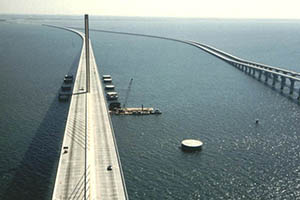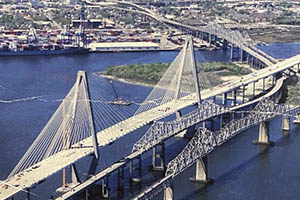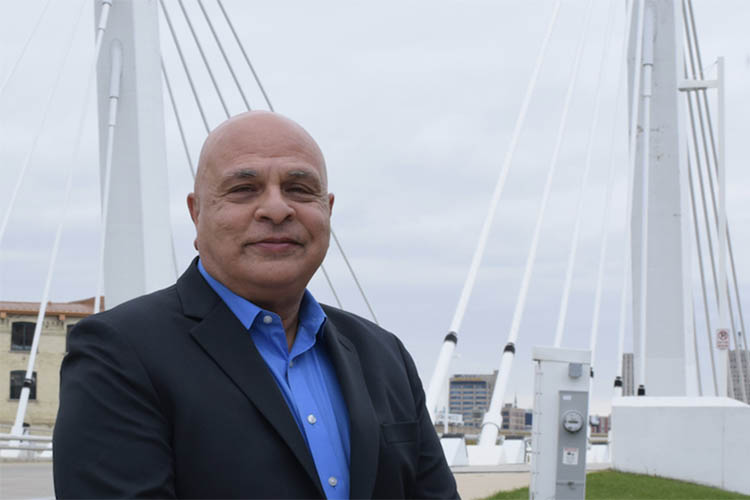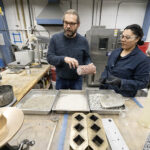When a cargo ship struck the Francis Scott Key bridge in Baltimore in March, causing it to collapse, it was a case of déjà vu for Habib Tabatabai, faculty member in the UWM’s College of Engineering & Applied Science.
An eerily similar accident happened in 1980 when Tabatabai was in graduate school. Florida’s Sunshine Skyway Bridge, a steel truss bridge, collapsed after a ship hit it in foggy weather. When rebuilt, the steel truss design was discarded in favor of a different kind of bridge, called a cable-stayed bridge.

When the new bridge opened for traffic in 1987, Tabatabai was a young engineer working for the Florida Department of Transportation, and he joined the team conducting the new bridge’s first inspection. It was the beginning of his interest and career as an expert on cable-stayed bridges.
The new bridge in Baltimore will likely be a cable-stayed bridge. So, it isn’t surprising that Tabatabai has been interviewed by the media multiple times about the rebuilding of the Baltimore bridge – most recently by NPR.
Here he explains what distinguishes this kind of bridge and where to find them.
What is a cable-stayed bridge and why is it being considered as the design for the rebuild in Baltimore?
Super long-span bridges are most suitable for suspension bridges – like the Verrazzano Narrows Bridge in New York or the Golden Gate Bridge in San Francisco. And then you have intermediate-span bridges that are best suited for the cable-stayed type.
They both have some similar features. They are both cable-supported bridges and they have towers, or pylons as we call them, that help support the structure. But the arrangement of cables is different between the two.
In the cable-stayed bridge, the cables support the deck directly from the pylons through straight but inclined cables running from the pylons to the deck. In a suspension bridge, a large main cable hangs in a catenary shape (draped horizontally) between the tops of the pylons and then there are vertical “hanger” cables that support deck on the main cable.
Why has the steel truss bridge fallen out of favor?

The steel truss bridge was the go-to system in the ’60s, ’70s and ’80s. But since the early 1990s, there has been a shift to the more modern cable-stayed structure because of they are more economical to build.
The typical bridge contracts are based on a low-bid process. And, it turns out, that the old truss bridge requires a lot of fabrication work and a lot of materials in its construction, along with increased labor costs. That means it would no longer be the most economical option for the range of spans considered here.
I call today’s cable-stayed bridge design a modern, mature system. It has matured, and so it’s not a new technology that has a lot of unknowns with it.
Are cable-stayed bridges just as safe as other kinds of bridges?
The structural systems are just as safe. They have the same level of resilience and the expected life as with any other bridge that has been properly maintained.
Where can you see this kind of bridge structure in Wisconsin or the Midwest?
There are only small-span bridges of this kind in Wisconsin, although there are many more across the U.S. In Milwaukee, the Sixth Steet Viaduct bridge, and also the pedestrian bridge at the Calatrava Art Museum are cable-stayed. There is also another pedestrian bridge crossing I-41 in Menomonee Falls. All the newer crossings of the Mississippi River have been cable-stayed structures. In Saint Louis – the I-70 Bridge and the Clark Bridge – are examples of cable-stayed bridges.







